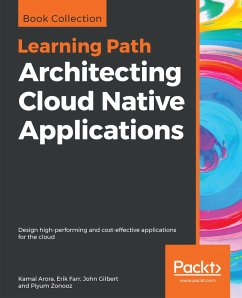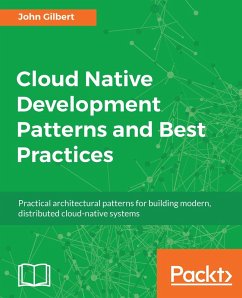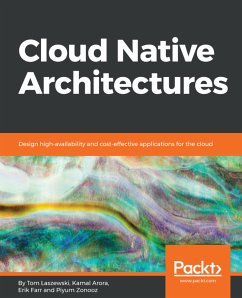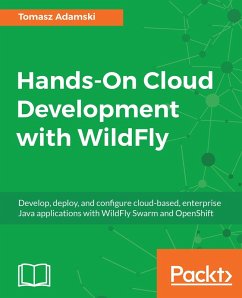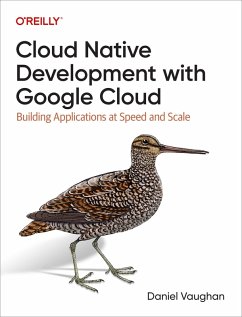
Hands-On Cloud-Native Applications with Java and Quarkus (eBook, ePUB)
Build high performance, Kubernetes-native Java serverless applications
Sofort per Download lieferbar
19,95 €
inkl. MwSt.

PAYBACK Punkte
10 °P sammeln!
Build robust and reliable Java applications that works on modern infrastructure, such as containers and cloud, using the new features in Quarkus 1.0 Key Features Build apps with faster boot time and low RSS memory using the latest Quarkus 1.0 features Seamlessly integrate imperative and reactive programming models to build modern Java applications Discover effective solutions for running Java on serverless apps, microservices, containers, FaaS, and the cloud Book DescriptionQuarkus is a new Kubernetes-native framework that allows Java developers to combine the power of containers, microser...
Build robust and reliable Java applications that works on modern infrastructure, such as containers and cloud, using the new features in Quarkus 1.0
Key Features
Book Description
Quarkus is a new Kubernetes-native framework that allows Java developers to combine the power of containers, microservices, and cloud-native to build reliable applications. The book is a development guide that will teach you how to build Java-native applications using Quarkus and GraalVM.
We start by learning about the basic concepts of a cloud-native application and its advantages over standard enterprise applications. Then we will quickly move on to application development, by installing the tooling required to build our first application on Quarkus. Next, we'll learn how to create a container-native image of our application and execute it in a Platform-as-a-Service environment such as Minishift. Later, we will build a complete real-world application that will use REST and the Contexts and Dependency injection stack with a web frontend. We will also learn how to add database persistence to our application using PostgreSQL. We will learn how to work with various APIs available to Quarkus such as Camel, Eclipse MicroProfile, and Spring DI. Towards the end, we will learn advanced development techniques such as securing applications, application configuration, and working with non-blocking programming models using Vert.x.
By the end of this book, you will be proficient with all the components of Quarkus and develop-blazing fast applications leveraging modern technology infrastructure.
What you will learn
Who this book is for
The book is for Java developers and software architects who are interested in learning a promising microservice architecture for building reliable and robust applications. Knowledge of Java, Spring Framework, and REST APIs is assumed.
Key Features
- Build apps with faster boot time and low RSS memory using the latest Quarkus 1.0 features
- Seamlessly integrate imperative and reactive programming models to build modern Java applications
- Discover effective solutions for running Java on serverless apps, microservices, containers, FaaS, and the cloud
Book Description
Quarkus is a new Kubernetes-native framework that allows Java developers to combine the power of containers, microservices, and cloud-native to build reliable applications. The book is a development guide that will teach you how to build Java-native applications using Quarkus and GraalVM.
We start by learning about the basic concepts of a cloud-native application and its advantages over standard enterprise applications. Then we will quickly move on to application development, by installing the tooling required to build our first application on Quarkus. Next, we'll learn how to create a container-native image of our application and execute it in a Platform-as-a-Service environment such as Minishift. Later, we will build a complete real-world application that will use REST and the Contexts and Dependency injection stack with a web frontend. We will also learn how to add database persistence to our application using PostgreSQL. We will learn how to work with various APIs available to Quarkus such as Camel, Eclipse MicroProfile, and Spring DI. Towards the end, we will learn advanced development techniques such as securing applications, application configuration, and working with non-blocking programming models using Vert.x.
By the end of this book, you will be proficient with all the components of Quarkus and develop-blazing fast applications leveraging modern technology infrastructure.
What you will learn
- Build a native application using Quarkus and GraalVM
- Secure your applications using Elytron and the MicroProfile JWT extension
- Manage data persistence with Quarkus using PostgreSQL
- Use a non-blocking programming model with Quarkus
- Learn how to get Camel and Infinispan working in native mode
- Deploy an application in a Kubernetes-native environment using Minishift
- Discover Reactive Programming with Vert.x
Who this book is for
The book is for Java developers and software architects who are interested in learning a promising microservice architecture for building reliable and robust applications. Knowledge of Java, Spring Framework, and REST APIs is assumed.
Dieser Download kann aus rechtlichen Gründen nur mit Rechnungsadresse in A, B, BG, CY, CZ, D, DK, EW, E, FIN, F, GR, HR, H, IRL, I, LT, L, LR, M, NL, PL, P, R, S, SLO, SK ausgeliefert werden.





